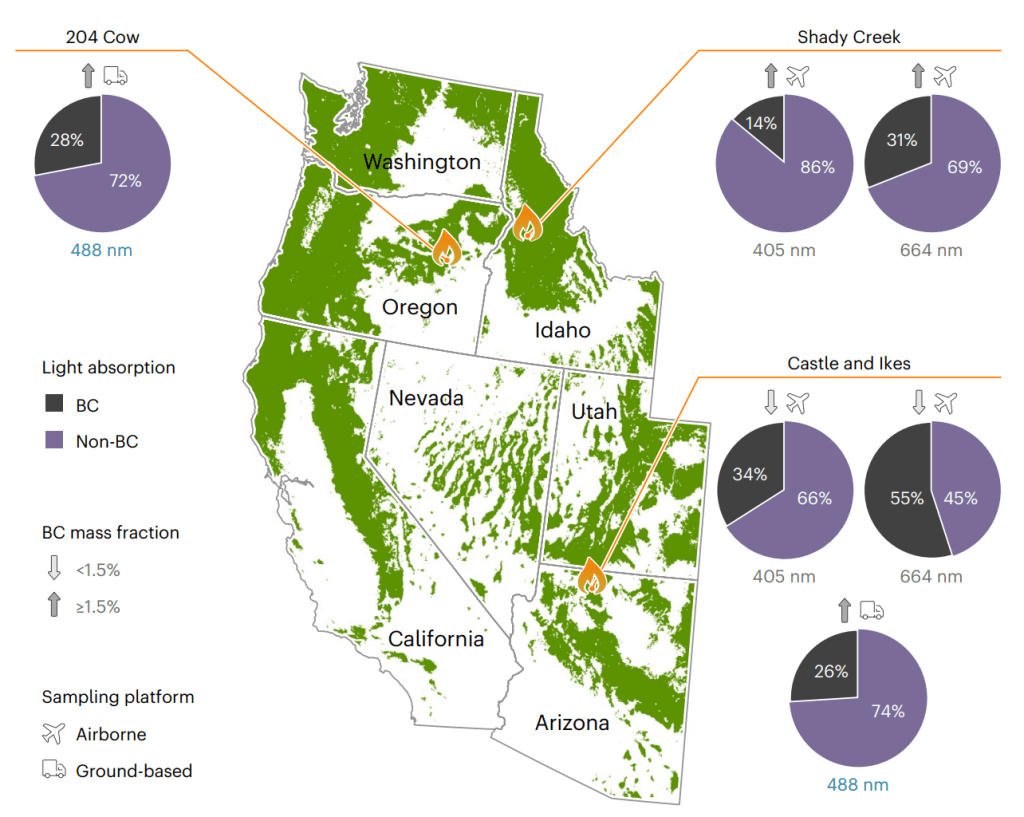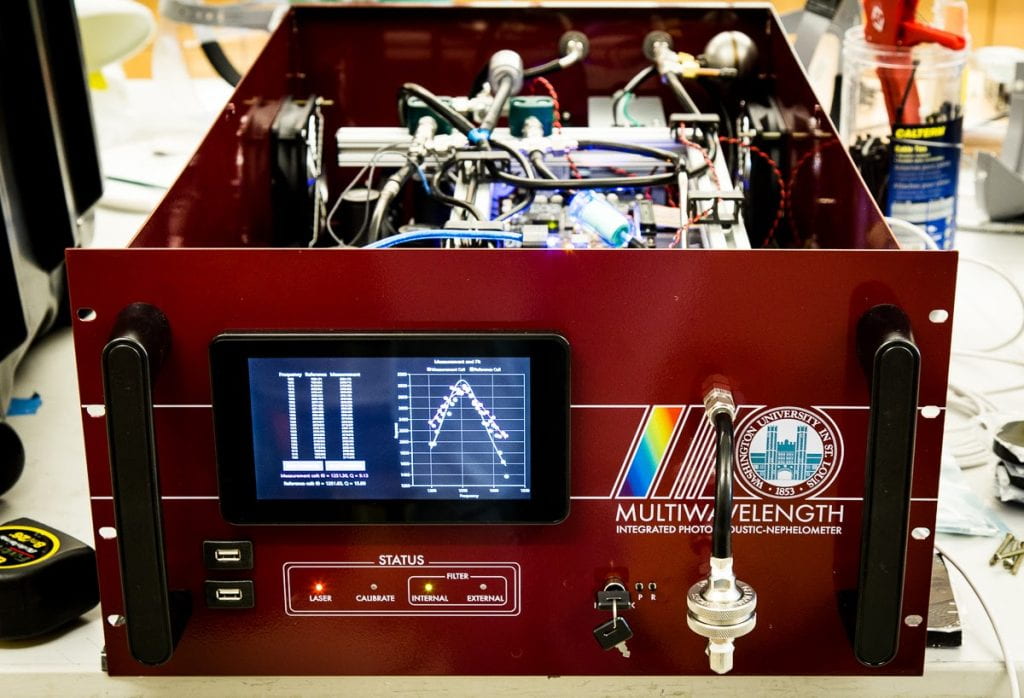The Chakrabarty group have been conducting research focusing on the following themes. Please click on the hyperlinks to read more!
Atmospheric Brown Carbon – Laboratory and Field Studies

Our lab actively participates in field campaigns to measure the optical properties of atmospheric brown carbon from wildfires, biomass burnings, and industrial emissions and collects particle samples for offline analyses on their refractive indices, morphologies, and homogeneities. In addition to field studies, we also investigate optical and physical properties of biomass burning aerosols from the combustion of different types of biomass fuels under controlled laboratory conditions.
Aerosol Climate Impacts – Measurements and Modeling

We constrain aerosol-radiation interactions in the atmosphere and the cryosphere by estimating direct forcing efficiencies and radiative forcing. We incorporate field and laboratory optical property data in our models and utilize tools such as libRadtran, SNICAR and WRF-Chem. Our studies have previously covered radiative forcing due to brown carbon aerosols from the burning of boreal peatlands. Recent work has focused on predictions of snow surface radiative forcing due to dark brown carbon deposition from wildfires.
Fundamental Aerosol Physics – Simulation and Theory

We leverage the fundamental principles of physics to create diverse shapes for atmospheric aerosol particles. We subsequently apply a range of computational methods such as the Discrete-dipole approximation (DDA), Multiple sphere T-Matrix method (MSTM), and Mie Theory to compute the optical properties of individual aerosol particles. These single particle optical properties are then utilized in Radiative Transfer simulations conducted on regional and global scales.
Aerosol Instrumentation and Engineering Techniques

The lab continues to work on the development of instrumentation for the measurement of aerosol optical properties. Instruments include photoacoustic spectrometers to measure aerosol absorption using first principles and also an asymmetry parameter monitor. These in-house designed instrumentation are regularly used for field campaigns and lab-based emission measurements. Using the measurements, we also develop techniques to correct filter-based absorption measurements that suffer from artefacts that are difficult to predict.
Software to model Aerosol Optical Properties
The group develops easy-to-use software packages to model aerosol optical properties at varying levels of complexity. These include properties of spherical particles using Mie theory (PyMieScatt) and also of complex fractal shapes using the Discrete Dipole Approximation (pyBCabs).
Aerosol and Material Synthesis

The group develops novel techniques to manufacture materials for application to industry. This includes an understanding of fundamental processes, for example, the novel kinetics of aerosol-to-gel transitions to develop a method to manufacture aerosol gels like titania and silica using a novel flame synthesis technique.

SARS-CoV-2 in Human Breath
The Chakrabarty Group, in collaboration with the Washington University School of Medicine, are working on the development of quick and adaptable diagnostic tools for disease management during the COVID-19 pandemic. One project was on designing a Breath Aerosol Analyzer testing platform with potent applications for swift and accurate mass testing. We integrated an affordable collection device to sample patient breath aerosols and an ultrasensitive Micro-Immunoelectrode (MIE) Biosensor for detecting SARS-CoV-2 viral particles in exhaled breath.
SARS-CoV-2 in the environment

COVID-19 is a disease caused by Severe Acute Respiratory Syndrome Coronavirus 2 (SARS-CoV-2) that is primarily transmitted through aerosols. The rapid detection of the virus in real-time can help slow down the spread of the disease. Our team has developed a highly efficient bioaerosol sampler using wet cyclone sampling technology that can continuously monitor and sample airborne viruses. In collaboration with Dr. John Cirrito and Dr. Carla Yuede from the WashU School of Medicine, we have coupled this high flow biosampler with a llama-derived nanobody-based micro-immunoelectrode (MIE) biosensor that specifically targets the SARS-CoV-2 spike protein.
Aerosol Exposure Chamber

We are developing a system that allows mice to move freely while being exposed to particulate matter (PM) chemical components. This will help us investigate the potential link between PM and Alzheimer’s disease (AD) markers. We are using a state-of-the-art, real-time microdialysis setup and collaborating with Dr. John Cirrito and Dr. Carla Yuede from the WashU School of Medicine to design a mouse model that will enable us to study the effects of controlled PM exposure on AD biomarkers.
Disease Modelling

The lab is involved in modelling the spread of infectious diseases like SARS-CoV-2 to study the effect of ambient aerosol particles and possible implications to environmental justice. Another study involved modelling tics that exhibit fractality – lack black carbon – which can aid the monitoring of its severity.